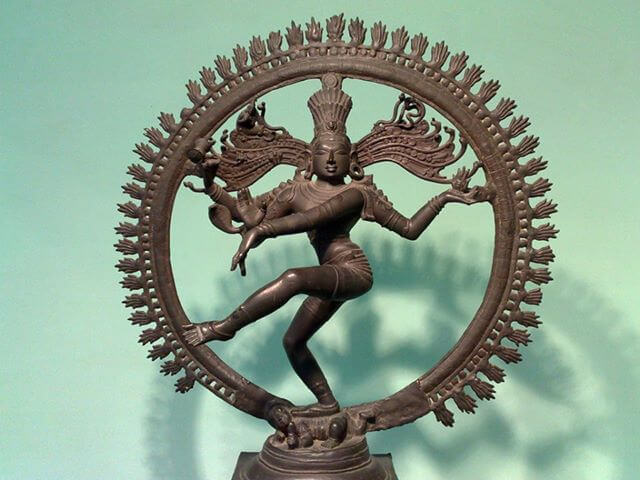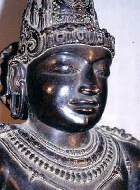Hi Everyone!! This article will share The Era of Regional Kingdoms Questions & Answers.
In my previous post, I have shared Objective Type Questions & Answers of The Era of Regional Kingdoms so, make sure to check that post as well.
The Era of Regional Kingdoms Questions & Answers
Question 1: What is nagaram?
Answer: The nagaram was an assembly found in important trade centres catering to the needs and interests of traders and merchants.
Question 2: Why did notable men select Gopala as a king?
Answer: It was in the midst of prevailing anarchy that some notable men of the society selected Gopala as a king to save the country. He established the Pala Empire in Eastern India in 750 CE.
Question 3: How did Dantidurga lay the foundation of the Rashtrakuta Kingdom?
Answer: Dantidurga overthrew the rule of Kirtivarman, Chalukyan king and laid the foundation of the Rashtrakuta Kingdom.
Question 4: What were the sources of income of Chola empire?
Answer: Land revenue, tolls, variety of professional taxes, house tax, taxes on mines and forests, plunder of the neighbouring territories, etc. along with trade and commerce were the sources of income of Chola empire.
Question 5: Name the two types of officials in the central administration of the Cholas.
Answer: The two types of officials in the central administration of the Cholas were perundanam (the higherofficials) and sirudanam (the lower officials).
Question 6: Write about the revenue administration of the newly emerged kingdoms.
Answer: Peasants, artisans, cattle-keepers were often compelled to surrender a certain part of their produce as ‘rent’. Revenue was even collected from the traders. It was utilised to fight wars, finance the king’s establishment, to construct temples and forts. Members of influential families collected revenue.
Question 7: What kind of rural government existed during the time of Cholas?
Answer: There are number of inscriptions throwing light on the rural government of the Chola empire. The rural administration had three types of assemblies, namely, the ur, the sabha or mahasabha and the nagaram. The ur was a general assembly of common villages, which included land holders of all classes of people. The sabha was restricted to the villages with Brahmin settlements where land belonged to the Brahmins. They often received land grants known as brahmadeya, which were rent-free. The nagaram was an assembly found in important trade centres catering to the needs and interests of traders and merchants. This self-government system which existed during the Chola period worked in other villages as well to some extent. The degree of autonomy enjoyed at the village level was very noteworthy.
The Era of Regional Kingdoms Questions & Answers
Question 8: Write in brief about the Pratiharas.
Answer: The Pratiharas gave up their traditional occupation and rose to the prominence, by using their military skills, in Rajasthan. They ruled North India from the early ninth to the middle of the tenth century. Nagabhatta I, Mihira Bhoja were the prominent kings of the Pratihara dynasty. They were the great patrons of learning and literature. Repeated defeats at the hands the Rashtrakuta kings led to the downfall of the Pratiharas.
Question 9: Write down the divergent views about the origin of the Rajputs.
Answer: An important ruling clan that appeared on the political landscape of medieval Indian was the Rajputs. They dominated the history of North India from the eighth to the twelfth century CE. Historians have divergent views about their origin. Some believe that they descended from the foreign tribes such as Sakas, Kushanas, Hunas, Pahlavas while other group of historians believe that they descended from Agnikula (the Fire family), or are Suryavanshis (the Sun family), or Chandravanshi (the Moon family).
Question 10: Write about the irrigation system of the Chola Empire.
Answer: Agricultural prosperity depends on the available water supply. The Cholas paid attention to the irrigation system. Rivers such as the Kaveri were utilized for irrigation purpose. Embankments were built to prevent flooding and many canals, dams, tanks and wells were constructed.
Question 11: Indian feudalism was responsible for the emergence of the regional kingdoms. Give reasons.
Answer: The term feudalism is derived from the Latin word ‘feodum’ meaning fief. Chiefs were powerful elements of society. They controlled large areas of land with their military forces. The king was one of the powerful feudal chiefs who played an important role in the government. With a desire to build a mighty empire, these powerful chiefs fought constantly with each other that caused a state of social anarchy. To control the situation, the king asked the chiefs to take an oath of loyalty to him as his vassals. In return the king granted the chiefs land dominated by themselves as their fiefs. The chiefs, in turn, could not only appoint sub chiefs as vassals but also allot a piece of land out of his fief to them.
From the seventh century onwards there was a noticeable increase in the number of land grants made in different parts of the country. The practice of donating lands was not only restricted to the petty lords but was also extended to the Brahmin priests and Buddhist monks for religious purposes. These grants were largely given by the kings, chiefs, members of the royal family and their feudatories. As a result of these profusely made land grants, this period gave rise to big landlords or chieftains who came to be known as Samantas or subordinates. In due course of time, the samantas gained power and wealth, and declared themselves as maha-samanta, maha-mandaleshvara (the great lord of ‘circle’ or reign). They were always in the lookout for the opportunity to free themselves from their overlords and to establish their own kingdoms.
Question 12: Write short notes on.
(a) The Palas
Answer: The Pala Empire was established by Gopala in Eastern India, probably in 750 CE. He not only unified Bengal but also established its supremacy by annexing Magadha (Bihar). Devapala was the last powerful Pala ruler. He extended his dominions by conquering Pragjyotishpur (Assam), part of Odisha and part of modern Nepal. The death of Devapala and his weak successors caused the disintegration of the empire. The Palas played a significant role in reviving cultural and religious traditions. According to the Tibetan chronicles, Pala rulers were great patrons of Buddhist learning and religion.
(b) Provincial administration of the Chola Empire
Answer: The Chola Empire was divided into a number of provinces known as mandalams for the sake of administrative convenience. Each mandalam was divided into valanadus (districts) and then the districts were divided into a group of villages known as nadus. The large townships formed a separate administrative unit called taniyur. Mandalams were put under the charge of a governor who usually belonged to the royal families.
(c) The Rajputs
The Rajputs was another important ruling clan who appeared on the political landscape of medieval Indian history was. They dominated the history of North India from the eighth to the twelfth century CE. Historians have divergent views about their origin. One Rajput clan which left its mark is the Chauhan or the Chahamana rulers. The Chauhans arose as vassals of the Gurjara-Pratiharas. Prithviraj Chauhan was the famous ruler of Ajmer. He was also known as Rai Pithora. The valiant ruler led a resistance against Muhammad Ghori but was defeated in the Second Battle of Tarain.
(d) Tripartite struggle
- Due to its location, Kanauj became an important centre of trade and commerce.
- The fertile region of Gangetic valley fostered agriculture.
- The new kingdoms were equally interested in acquiring control over Kanauj.
- The struggle between the Rashtrakuta’s, the Pratihara’s and the Pala’s to establish their supremacy over Kanauj is termed as the tripartite struggle by the historians.
The Era of Regional Kingdoms Questions & Answers
Question 13: Rajendra I’s greatest achievement was his naval expedition to Sri Vjaya. Give reasons.
Answer: The greatest achievement of Rajendra I was his naval expedition to Sri Vjaya (present day Indonesia). He captured a number of places. The expedition was undertaken to clear the hindrance caused by Sri Vijaya to Indian traders and to increase trade with China. A number of places such as Kadaram (kedah), Malay Peninsula and Sumatra were occupied. The Cholas after Rajendra I tried to preserve the Chola empire. But, they continuously fought against each other and weakened themselves. Rajendra III was the last Chola ruler who was defeated by the Pandyan king Jatavarman Sundara Pandya II and thus, the Chola empire merged in the Pandya kingdom.
Question 14: Describe the revenue system of the Cholas.
Answer: Land revenue was an important source of state income. Hence, the land revenue department was very well organised. Utmost care was taken on the recording of land rights and revenue dues. All lands were carefully and elaborately surveyed and classified for assessment of revenue. Revenue was collected in cash or in kind. The residential part of the village (called ur nattam), and other lands such as lands belonging to the temples, tanks, channels passing through the villages, etc. were exempted from taxes. Besides land revenue, other sources of public income were tolls, variety of professional taxes, house tax, taxes on mines and forests, plunder of the neighbouring territories, etc. along with trade and commerce.
Question 15: List any three features of this sculpture.

Answer:
- The sculpture belongs to the Chola period.
- The bronze dancing figure of Lord Shiva, called Nataraja.
- It exhibits great artistic skills in bronze casting and making idols.
- It depicts the high standard achieved in the art of sculpture during the Chola period.
Question 16: Observe the picture and answer the questions:

(a) Identify the ruler shown in the picture.
Answer: Rajaraja I
(b) Name the dynasty to which the ruler belongs.
Answer: Chola
(c) Name the architectural style of the dynasty.
Answer: Dravida
(d) Name any two temples of the architectural style.
Answer: Kailashnatha temple, Brihadeshvara temple and Gangaikondacholapuram temple.
Question 17: Why do you think the Chola kings sponsored huge amount of money to build temples?
Answer: The Cholas donated generously to the construction and maintenance of the temples. Even the rich merchants donated as temples were not only a place of worship; they were centers of social life and economic activities as well.
So, these were The Era of Regional Kingdoms Questions & Answers.